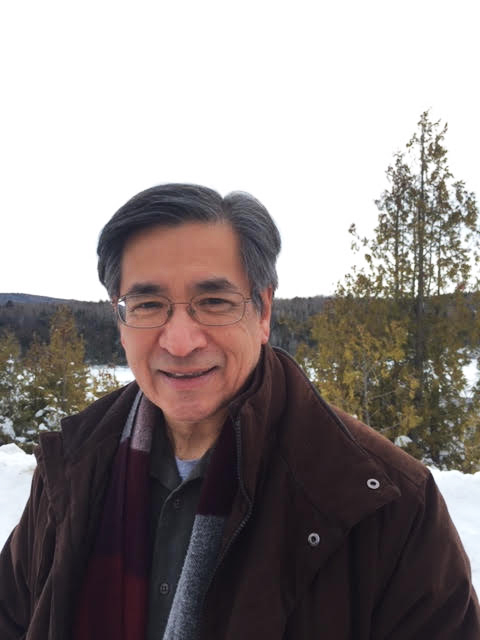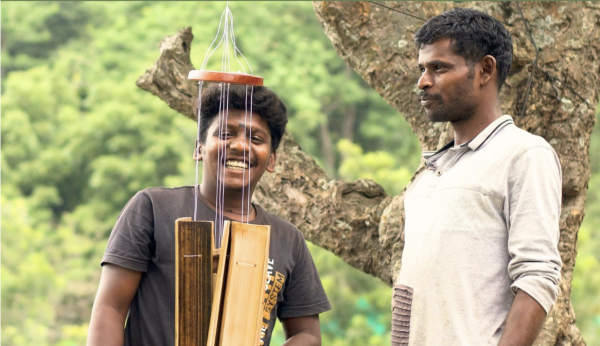Dr. Bernard C. Perley, Cartoonist and Anthropologist
Photo Courtesy of Bernard C. Perley.
Bernard C. Perley.
Dr. Bernard C. Perley is an associate professor of Anthropology at the University of Wisconsin in Milwaukee, where he teaches anthropology classes such as American Indian Societies and Cultures and Applications in Anthropology: Native American Oral Traditions. In addition to being a professor, Perley is a cartoonist who often incorporates the experience of Native Americans in his work. On Tuesday afternoon, he gave a talk titled “Having Reservations: Humor and the Arts of Healing,” in which he spoke about the role of comics in resolving trauma through humor.
This interview has been edited for length and clarity.
What, in your opinion, are the connections between humor, cartoons, and healing?
For me, [humor] is a way of relieving some of the anguish and some of the stress. We don’t do it consciously; it just happens. … I recognize the value of that healing aspect of humor in our everyday conversations. Now, we’re living in a [world of] heightened anxiety. … I think it’s important that we have these outlets where we can relieve some of that kind of tension and anxiety. I recognize that humor, whether it’s standup comedians or late-night show hosts … [is used] to try to relieve some of that pressure.
And if I can do the same thing with my comics when it’s related to Native American experience in North America, then I feel like what I’ve done is created a community that recognizes [that] we do need some relief and healing from the anxieties that we’re all dealing with.
How did you realize that your comics had the power to heal?
Well, I think that for me, the comics were part of dealing with my own stress. I would go back and think about things and [then] just draw a real quick image, and I can laugh … and say, “Well, yeah, that was kind of a ridiculous moment.” So I kept doing these [drawings], and once I started showing people that, they would laugh as well. That’s when I knew that what I was capturing was helpful to others as well. It wasn’t just helpful to me, but others recognize that there was a common ground for them to experience. But at the same time as we were talking about the cartoons, we were able to recalibrate our relationships so that those anxieties or those tense moments wouldn’t be replicated.
Are your cartoons related to your activism, or do you view those as two separate fields that you inhabit?
One series of cartoons is actually being published in the Anthropology News magazine. And so that’s an act of engagement with the anthropology community. The personal series, Having Reservations, is distributed to people who I feel understand the humor and can use it in their classes because they know what I’m trying to accomplish. So what I’m trying to do, as I identify now, [is ask], “Is there a public out there that would be interested in those particular cartoons?”
Those Having Reservations cartoons are much more oriented toward the Native experience in colonial America: How do we deal with that sense that, our languages, our cultures, our territories are under constant assault? A [lot of] Native scholars and community members recognize what’s going on there, and a lot of my friends and allies in academia also recognize what’s going on there. So I’m really careful about that particular series, but I think that it could be [that] the time is right for that to become public as well.
How do people react to your cartoons? Do you think those reactions change if the viewer is Indigenous or if they’re white?
Definitely, there are different reactions. I think that when I draw the cartoons as a particular message that I’m trying to convey, the images are decoded from our own experiences. When we see a particular image, we bring our experience to understanding [the image]. So two different experiences may see the image in very different ways.
The idea that there’s an inside joke is probably true. [The comic] could be read in multiple ways, but I do subtly put these images in there, and people with particular kinds of experiences will pick up on those more subtle references.
How did you develop your artistic style as a comic?
The cartoons were always a part of my artistic output because for me as a painter, as a sculptor, as a draftsman, one of the things I do is very quick sketches. And these gesture drawings are really important in establishing the richness of [the] image I’m trying to produce. When I go to museums, I love to look at initial sketches of these paintings because you could see quick gestures [of] the life of the painting, and if the drawing seems static [or] seems stale, the painting seems the same way. And so the lively paintings are the ones that have these really rich, gestural drawings. I think the cartoons [I draw] are really quick. And then I have to stop and I have to really imagine how they’re going to go. So in some ways, cartooning has always been a part of my work — the actual finished product is the more labor-intensive [part].
What do you hope that the audience takes away from your talk?
That anthropology is a world of possibility. That we can collectively not just understand our world, but really make a difference in the world, and my work on language and social justice is trying to move toward a greater sense of awareness.











